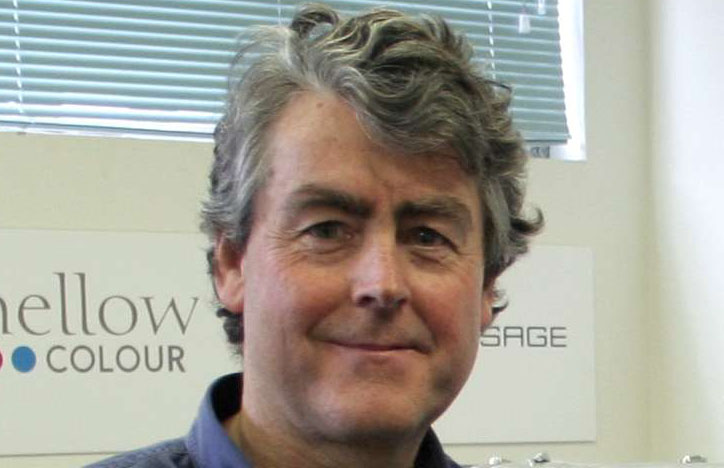
The expected rich chocolate cake, 20 candles a’flickering and a chorus of Happy Birthday ringing from the rafters were all conspicuously absent. Instead, all was quietly efficient and humming with professionalism when I met with DES managing director, Ian Clare (pictured), in the company’s Rhodes headquarters. The nearest to a celebration was the proffered comforting cup of coffee.
The company’s 20th anniversary has of course been well documented. Its gestation was born of Clare’s burning desire to operate his own business, having spent his previous years advising others how to manage theirs. DES was the fledgling acquisition by the Clare brothers, Ian and Tim, back in the late 1980s of a strangely named outfit called Drafting Equipment & Supplies (hence the DES). Its 1987 staff of five has grown over the years to today’s total of 117, and its portfolio spans a blue chip list of CAD and graphic arts brands.
With that modicum of caution which has marked much of his business philosophy over the years, Ian held on to his day job in an accountancy firm (he has degrees in a broad spectrum of financial and management disciplines) for the first four years until the newly acquired business gained traction.
Attracted to the dynamics
The well-known — and some may say spectacular — growth of the DES business has been a careful path of evolution into those areas of technology that offer growth. Traditional drafting moved into inkjet plotters and a subsequent business acquisition took the Clare brothers into inkjet printers and the signage market. Segue to the 1998 CEBit, where the first contact was made with Epson and a phenomenon then known as a pre-proofer.
“It turned out the quality it was producing was equal to the then Iris system at a fraction of the cost, and we picked up the Australian distribution,” Clare recalls, adding wrily that “to be honest I didn’t have a clue what that market was all about. I didn’t really know what a proof was, but I learned quickly.”
That initial move into the graphic arts area vividly demonstrated Ian Clare’s vision for the future, justifying the move on the basis that he was attracted to the dynamics of what had been developed.
“They were talking about innovation and change; they were talking about re-engineering businesses and reducing costs and these were dynamics to which I was attracted.”
The roller coaster took on momentum after early connections with such organisations as Best, CGS and EFI and latterly, the merger with Cyrachrome. They challenged Clare to seek out comparable products such as Mitsubishi’s inkjet paper range, as the industry moved into the emerging era of digital proofing, which helped the company grow exponentially. Clare decided it was time to become more and more focused on the graphic arts area at the expense, admittedly, of the signage side even though at the time, traditional drafting had still not graduated from pen plotters to inkjet plotters. A subsequent acquisition took him into inkjet printers and by association, into the signage market.
Comment below to have your say on this story.
If you have a news story or tip-off, get in touch at editorial@sprinter.com.au.
Sign up to the Sprinter newsletter
